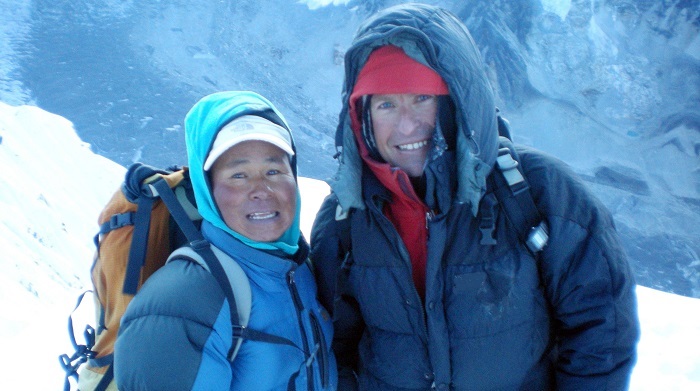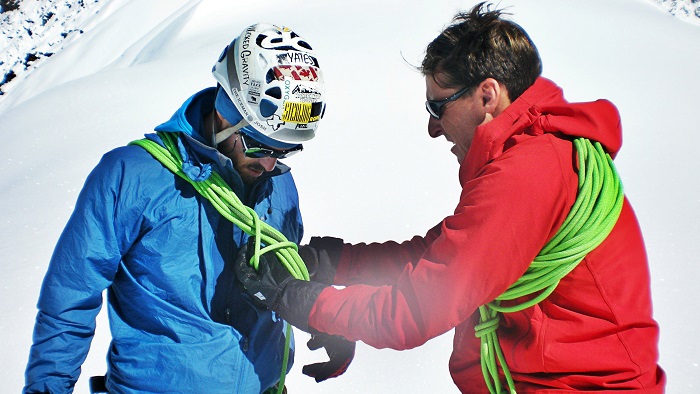Words By: Sean James
This is a blog that will follow my climb to the summit of the highest mountain in the world, Mount Everest, over the next few months. There are also live radio broadcasts from base camp via the Travel Show on Dubai Eye 103.8 where you can hear how progress is going.
Everest
Part 1 is written from Arabian Ranches, Dubai just before I leave. I am due to meet the rest of the team in Kathmandu. They fly out from the United Kingdom on the 30th of March. This first part is about my preparation, training, the search for support and things that need to be done for a trip that will last until the 4th of June, over 60 days away from home.
Everest has many names but gets its European name from the British Superintendent General of the Survey of India from 1830 to 1843, Sir George Everest who first surveyed it. To Tibetans it is called Chomolungma or Qomolangma which means “Mother Goddess of the Earth”. The Sherpa people call it Sagarmatha meaning “Goddess of the Sky”. It is undoubtedly the highest point on Earth and a prize for many. Around 4,000 people, or the equivalent of five full A380s have stood on the summit as of 2014.
I’ve guided on lots of high mountains before; three have been over 8,000m plus many lower but until a year ago Everest had never been on my list. For the last 3 years I had been working as a lecturer so I was restricted by the times of my holidays. Last June, my contract finished and rather than look for another rubbish job that I didn’t really like, I set my focus on climbing mountains again. Despite not earning much it’s gone pretty well since and I’ve travelled, trained and competed in marathons and triathlons during the last 10 months which has been good preparation. Who knows what the next 10 months will bring when I return in June?

Kathmandu
I leave Dubai on FlyDubai on the 26thof March and arrive in Kathmandu early. I’m with my girlfriend and we want to enjoy a few quiet days in a city that is so different from anything that we have here in the UAE. The hippie district of Thamel is always bustling and crowded, but it also has small pockets of tranquility. I’ve been to Nepal many times and never tire of it. I could quite happily spend a week in Kathmandu trying out the different restaurants, bars and coffee shops, even though I’ve sat in them for many hours.
8,000m
All of the high mountains over 8,000m in the world are either in Nepal, China or Pakistan. The season to climb in Nepal is in the spring, pre monsoon from April to June and in the fall post-monsoon, from September to October. During these times, everyone flocks to Kathmandu or Islamabad to start their adventure.
Most people tackle an 8,000m with the help of many other people. Firstly there is normally an expedition company, normally in the climber’s home country, for example the UK who initially sell the “package”. They would provide advice, training, infrastructure, planning and completely oversee the trip to ensure that their standards are upheld. For an 8,000m they would also send an experienced guide with the clients. Over the last 20 years, it is these companies that I have worked for and travelled the world with. The expedition company would then contract the ground services in Nepal to a local agent who they have established a relationship with. Ground services would include the hiring of suitable Sherpas, cooks and ancillary staff plus transport, hotels, food, oxygen and everything that happens once in a country such as Nepal. Obviously this is a huge task and the expedition company wants to ensure that no corners are cut and the clients are getting what they expected.
I’ve been working for OutdoorUAE for the past two years, writing as an Editor and so for the past few months, our focus has been on the Everest expedition. We have given slideshows around Dubai at Fitness First and the Dubai International Boat Show. We have tried to involve our current partners who are the obvious first stop as their outdoor and adventure products have a synergy to what we are trying to do. Dubai is a fantastic place for energy and new ideas. Things can happen almost immediately if you are lucky. Some of our propositions hit the right spot and fortunately we now have some great supporters whose products will be with me in Nepal and hopefully on the summit in two months.
Preparations
What I’ve learnt from previous expeditions is that food is very important and can make or break the expedition. Part of our trip is through Tibet (China) and the food can be lacking a lot. In addition, on the mountain we usually eat pre-packaged dehydrated food out of a bag that you add boiling water to. They are terrible but light to carry at altitude. I act like one of Pavlov’s dogs even at the sight of high altitude food and instantly gag after 20 years of guiding. I’m quite small so any weight loss affects me a lot so I’ve tried to ensure I’ve got my favourites. I even booked extra weight on the flight over so I could bring some tasty, spicy packaged curries from Dubai. Heavier but worth the effort. Luckily GU Energy, MuleBar and Aqualyte have given me a large packet to take up to base camp and on the mountain so I’ll be with my favourites. I’ll also stock up on Haribo, Pringles and chocolate in Kathmandu. Time to forget the waistline.
Equipment is important and over the years I have collected a vast amount of down gear, tents, boots, gloves, socks, ice axes, crampons, rucksacks etc but they are all in a varying state of repair. Luckily this year we have a super motivated client from GO Sport in the Middle East. They have just secured the Millet range of products, a French brand of awesome climbing gear that covers virtually everything. Moving with speed other companies can only dream of I’m suddenly fully kitted from top to bottom in everything Millet. After 20 years of trying to avoid the corporate, commercial and world of sponsorship, having someone put their faith in you to represent their brand is exciting and gives an added boost of confidence.

The route
There are many routes to the summit of Everest. Two are considered standard – one from the south via Nepal and one from the north via Tibet-China.
The route I will be on is the Northeast Ridge Standard Route. It was first climbed on May 25th, 1960 almost seven years after the first ascent from the south. The first people were Chinese; Wang Fu-chou (Chinese), Chu Yin-hua (Chinese) and Gongbu (Tibetan).
In the past, the north has been less popular and seen fewer ascents because of access issues but in the last five years, the number of ascents has increased. Statistics can be misleading and despite the fact that the North East Ridge is considered safer by climbers it has a higher fatality rate – 9% more than the south. Fatality rate is fatalities/summits.
In terms of objective dangers, the most dangerous part of the North East Ridge route are avalanches from stable snow slopes of the North Col. The narrow, terraced ledges of the Yellow Band at 8,600m has also seen a number of climbers falling as they are tired and the altitude is starting to take effect.
So that’s all from April. Next time you read this, there may be fewer pictures and the text will be sent back via satellite from base camp in Tibet. Keep checking the OutdoorUAE and OutdoorArabia media channels for further updates.
We would like to thank the following for their interest and support in what we do and in particular Everest 2015. GO Sport and Millet as well as Nite Watches and Al Mekshah have provided the best equipment and support possible as well as numerous others.
If you are interested in climbing high mountains and even Everest in 2016, contact us.

